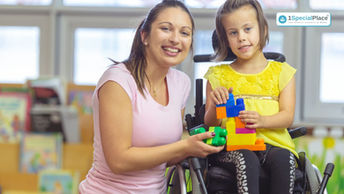All Posts


Swallowing Difficulties: A Comprehensive Guide
Swallowing is a complex process that involves several muscles and nerves working together. Dysphagia , a swallowing condition, can result from a disruption in this mechanism. Dysphagia can be a serious condition, leading to malnutrition, dehydration, and even aspiration pneumonia. Swallowing difficulties, also known as dysphagia, can affect people of all ages for various reasons. This condition may arise from neurological disorders, muscular problems, structural abnormalities

1SpecialPlace
5 min read


Swallowing: The WH’s of Dysphagia
Dysphagia refers to a difficulty in the process of swallowing, where it takes more effort than normal to move food from the mouth to the stomach. Dysphagia can be associated with pain ( odynophagia ) and is common among young babies and older adults. It is a problem with swallowing that makes it difficult to get food or drink from your mouth to your stomach. Dysphagia is a painful condition. Swallowing can be difficult in several instances. Having trouble swallowing on occ

1SpecialPlace
5 min read


Is Stuttering a Disability? Understanding the Facts
Stuttering, often misunderstood as a minor speech hiccup, is actually a complex communication disorder that affects the fluency and rhythm of speech. Characterized by involuntary repetitions, prolongations, or speech blocks, stuttering impacts millions of people across the world both children and adults. While occasional disfluencies like “uh,” “you know,” or “umm” are part of normal speech, frequent and persistent disruptions can indicate stuttering. Beyond speech itself, st

1SpecialPlace
6 min read


Understanding the Disability Certificate
The Disability Certificate is a document that serves as proof of a person's disability . It may also be referred to as the PwD certificate, PH certificate, or handicap certificate. This certificate, along with an identity card, is crucial for individuals with disabilities of more than 40%. It enables them to access various facilities, benefits, and concessions available under different schemes. Defining Disability The World Health Organization (WHO) defines disability as "an

1SpecialPlace
5 min read


News of the month November 2025
News of the Month November 2025 brings a compelling collection of stories, breakthroughs, and inspiring moments from the world of disability inclusion, neurodiversity, healthcare, and education. This News of the month shines a spotlight on children and young adults taking the lead from art exhibitions and kitchen takeovers to national sports championships showcasing their talents, resilience, and creativity. Alongside these uplifting stories, November also highlights vital re

1SpecialPlace
8 min read


Vikaas Day Care Scheme For Person with Disability Children
Vikaas is a daycare program that was introduced by the Department of Empowerment of Persons with Disabilities, Ministry of Social Justice & Empowerment, Government of India. Its main goal is to give people with disabilities who reach the age of ten more opportunities to develop their interpersonal and vocational skills as they move into older age groups. During the PwD's stay in the Vikaas center, the Registered Organization (RO) center will also provide caregiving assistance

1SpecialPlace
3 min read


Do You Have a Voice Disorder?
Do You Have a Voice disorder Problem? Speech is the primary mode of communication for many people and therefore having a normal voice is critical for communicative efficiency. We all use our voices, probably even more than we realize, despite the perception that only professional voice users like singers and actors need to worry about their vocal health. Maintaining your vocal health should be a key priority whether you sing professionally, for pleasure in the shower, or are

1SpecialPlace
6 min read


News of the month October 2025
News of the Month October 2025 brings a wave of powerful stories and pivotal developments from across the disability, healthcare, and education sectors. This month highlights groundbreaking research, policy reforms, and heartwarming human stories that continue to inspire inclusion and innovation. From scientific milestones in speech and hearing sciences to nationwide efforts in special education and empowering individuals with disabilities, October has been a month of progres

1SpecialPlace
8 min read


Inspiring Down Syndrome Success Story of Sania Khimji
At 1SpecialPlace, we are honoured to celebrate extraordinary individuals who inspire change and redefine possibilities. This month, our Success Story features Sania Khimji an artist, model, influencer, and powerful advocate for inclusion, who proudly lives with Down syndrome. Her story is a vibrant celebration of courage, creativity, and confidence. Meet Sania Khimji “Hello, my name is Sania Khimj i, and I’m proud to be an artist, model, influencer, and advocate for inclusio

1SpecialPlace
5 min read


“Wh’s” of Neurogenic Stuttering and Stuttering
Stuttering is a complex speech sound disorder that affects the fluency of spoken language. It is not merely about speech disruptions it deeply impacts emotional well-being, confidence, and social participation. Over the years, research has revealed different types, causes, and recovery patterns of stuttering, as well as innovative ways to manage it, from speech therapy to yoga and mindfulness. This comprehensive guide brings together essential insights from experts at 1Speci

1SpecialPlace
5 min read


Empowering Speech: Digital Tools, Therapy, and Interventions for Stuttering
Stuttering is a complex speech disorder that affects the rhythm and flow of communication. For many, it can be an emotionally and socially challenging journey. With recent advancements in speech science and technology, the landscape of stuttering therapy has evolved dramatically combining traditional interventions, digital innovations, engaging games, and talk therapy to offer holistic support. Understanding Stuttering and Its Impact on Communication Communication is at the h

1SpecialPlace
5 min read


Understanding Feeding, Nurturing Healthy Eaters, and Feeding Therapy
Feeding is far more than simply eating to survive it is a deeply personal, biological, and emotional act that connects us with our bodies, families, and communities. From infancy through adulthood, feeding shapes how we grow, bond, and thrive. For children especially, feeding plays a vital role in their development physically, socially, and emotionally. In this comprehensive guide, we’ll explore the biology and psychology of feeding , practical tips for raising healthy eaters

1SpecialPlace
5 min read
